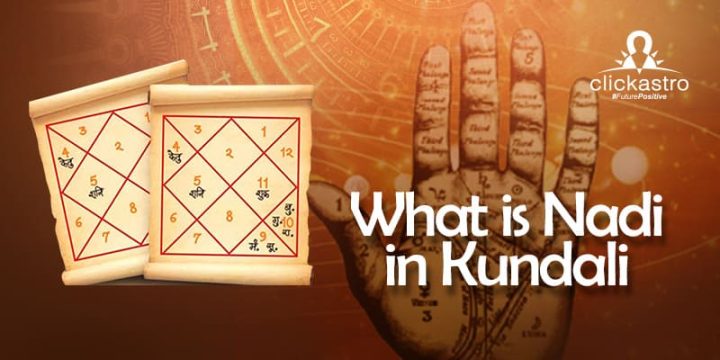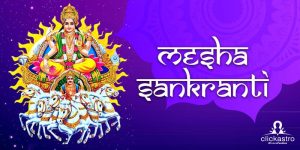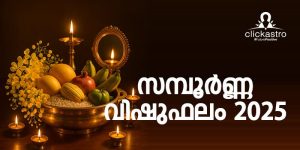Contents[hide]
Understanding Nadi in Kundali Matching
Astrology delves into the enigmatic depths of human character and destiny, using celestial configurations to decipher life’s intricacies. A quintessential facet of Indian matrimonial customs is Kundali matching, an age-old practice aimed at harmonizing the union of two souls. At the core of this profound ritual lies the assessment of eight pivotal facets of the couple’s forthcoming life, referred to as “kootas.” Among these, Nadi assumes a vital role. Nadi, one of the kootas, plays a crucial role in Kundali matching. It offers profound insights into the post-marital journey of the prospective couple. Nadi can be seen as a mirror reflecting the physical, psychological, genetic, and hereditary compatibility between partners. It’s subdivided into three categories: Vata (Aadi Nadi), Pitta (Madhya Nadi), and Kapha (Antya Nadi), each associated with unique characteristics. Understanding Nadi Dosha, an unfavorable alignment where both partners share the same Nadi, is imperative. This Dosha can lead to discord, health issues, and challenges in marital life. Exceptions exist when other factors like zodiac signs or ruling planets align favorably, mitigating the Nadi Dosha’s impact. In essence, comprehending Nadi in Kundali matching opens a portal to unravel the intricacies of a couple’s future, aiding them in building a strong and harmonious life together.What is Nadi Koota?
In the intricate process of Kundali matching, Nadi emerges as the eighth and defining koota, holding profound significance for the prospective couple’s journey after marriage. This pivotal koota delves beyond the surface, exploring the realms of physical, psychological, genetic, and hereditary compatibility between the partners. It is within the realm of Nadi that the threads of their future life intricately intertwine. Nadi, in itself, is a nuanced concept, classified into three distinctive categories, each known as a Nadi – Vata (Aadi Nadi), Pitta (Madhya Nadi), and Kapha (Antya Nadi). These designations resonate with the elements of air, fire, and water, mirroring their influence on the couple’s combined energies. Within the expansive cosmos of Nadi, there exists a total of 27 Nakshatras (stars), divided among the three Nadis. Each Nakshatra brings its unique attributes and characteristics, further shaping the couple’s compatibility profile. As Aadi Nadi represents the element of air, it symbolizes the flow of energy from bottom to top. Madhya Nadi, aligned with the fiery element of Pitta, signifies a balanced energy flow in both directions. Antya Nadi, associated with the watery element of Kapha, symbolizes energy’s descent from top to bottom. In the labyrinth of Nadi Koota, a profound understanding of these elements and their alignment provides invaluable insights into how the couple’s energies will harmonize or clash in their married life. This comprehension guides couples and their families in making informed decisions about their future together.The Importance of Nadi Dosha
In Kundali matching, Nadi Dosha stands as a pivotal concept that can profoundly influence compatibility and harmony within a marital union. This dosha materializes when the bride and groom share the same Nadi, creating a celestial confluence that carries both blessings and challenges. When the Nadi Dosha manifests, it signifies a potential discord in the energies and life paths of the couple. This alignment is believed to affect various facets of their married life, encompassing physical, emotional, and even health-related aspects.The consequences of Nadi Dosha can be far-reaching:
Struggles and Discord:
Nadi Dosha often ushers in marital challenges, manifesting as frequent discord and conflicts within the relationship. These disagreements can escalate, potentially leading to significant marital unrest. Understanding and addressing this Dosha is essential for couples seeking harmony in their married life.Health Concerns:
Nadi Dosha’s influence is often associated with health concerns, impacting not just the couple but potentially extending to their children. This belief underscores the need to consider Nadi compatibility during Kundali matching to minimize the risk of health-related challenges within the family unit.Unforeseen Challenges:
The existence of Nadi Dosha can introduce unexpected trials and tribulations, putting the strength of the marital bond to the test. These unforeseen challenges can be demanding, emphasizing the significance of addressing Nadi compatibility during Kundali matching to anticipate and navigate potential adversities in a marriage. However, it’s important to note that Nadi Dosha can be mitigated under specific circumstances, such as when the couple shares the same zodiac sign with different Nakshatras or the same Nakshatra with different zodiac signs. In these scenarios, the Dosha is believed to be nullified, offering relief from its potential negative effects.There are three types of Nadi Dosha, each with its effects:
Aadi Nadi Dosha:
Aadi Nadi Dosha carries profound implications for couples. This Dosha can ignite the potential for fiery disagreements and conflicts within the relationship. These disputes can escalate over time and, in some cases, may become irreconcilable, eventually leading to separation or divorce. Aadi Nadi Dosha’s influence on the couple’s compatibility can be tumultuous, challenging their ability to communicate and understand each other’s perspectives. It underscores the importance of considering Nadi Dosha during Kundali matching to help couples make informed decisions about their future together.Madhya Nadi Dosha:
Madhya Nadi Dosha’s presence is thought to usher in various hardships for the couple, creating a challenging environment within their relationship. Moreover, it extends its influence beyond the couple, potentially affecting the health and well-being of their offspring. It’s believed that children born to couples with Madhya Nadi Dosha may face health-related issues. The gravity of this Dosha underscores the significance of evaluating Nadi compatibility during Kundali matching to make well-informed decisions and navigate potential adversities successfully.Antya Nadi Dosha:
For couples affected by Antya Nadi Dosha, the path ahead may be fraught with unfortunate circumstances and health-related challenges. The Dosha’s presence is often associated with potential hardships that could impact the overall well-being of both partners. It’s believed that those affected by Antya Nadi Dosha may face heightened vulnerability to health issues, and in some cases, it’s even suggested that it might lead to the untimely loss of a spouse. This serious Dosha highlights the importance of meticulous Kundali matching to foresee and mitigate such potential adversities. Nadi Dosha can cast a shadow over the marital bond. It often signifies a fundamental lack of mutual compatibility between the partners. This lack of harmony can manifest as frequent quarrels, rendering the relationship turbulent and unromantic. Furthermore, the Dosha’s influence can extend to health-related issues, potentially affecting one of the partners post-marriage. Beyond personal matters, it might even have financial repercussions, leading to unexpected monetary burdens and other complexities that can impact the overall quality of married life. Hence, understanding and addressing Nadi Dosha is paramount for a harmonious marital journey. Check marriage compatibility by namesExceptions to Nadi Dosha
In the realm of Kundali matching, exceptions to Nadi Dosha serve as guiding lights, offering hope and relief to couples facing this celestial challenge. Nadi Dosha, arising when the bride and groom share the same Nadi, can potentially cast a shadow over their marital prospects. However, there are circumstances where the Dosha can be nullified, ensuring a smoother journey together.- Same Zodiac Sign, Different Nakshatras: When the couple shares the same zodiac sign but different Nakshatras, it is considered an exception to Nadi Dosha. This alignment signifies that while their zodiac may be the same, the nuances of their Nakshatras bring distinct energies to the relationship, mitigating the Dosha’s impact.
- Same Nakshatra, Different Zodiac Signs: Similarly, if the couple has the same Nakshatra but different zodiac signs, this is viewed as another exception to Nadi Dosha. Despite differing zodiac signs, the shared Nakshatra can harmonize their energies and offset any adverse effects of the Dosha.
- Different Zodiac Signs, Same Ruling Planet: Another exception occurs when the couple possesses different zodiac signs but shares the same ruling planet. This alignment suggests that the governing celestial body can act as a unifying force, fostering compatibility and negating the influence of Nadi Dosha.








